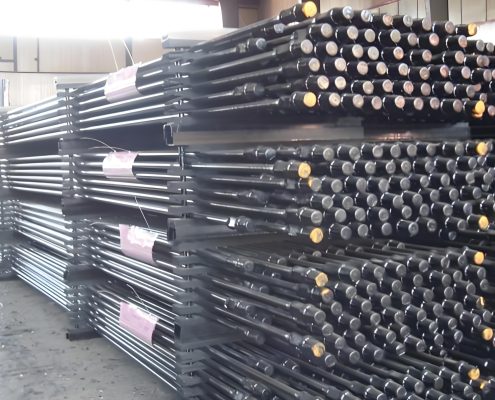Future Energy Steel offers top-quality API Spec 11B sucker rod, essential for efficient oil and gas extraction. Available in various sizes and grades, including Class C, D, and K, these sucker rods feature high tensile strength, excellent fatigue resistance, and corrosion protection. They are designed to withstand the harsh conditions of both shallow and deep wells. Key applications include onshore and offshore drilling operations, ensuring reliable performance and longevity. For more details, please contact [email protected].
FAQs
What is Sucker Rods?
Sucker rods are essential components in artificial lift systems used in the oil and gas industry to extract crude oil from wells. They play a crucial role in transferring mechanical power from the surface to the downhole pump.
What Are the Functions of Sucker Rods?
Power Transmission: Sucker rods connect the surface pumping unit to the downhole pump (often a plunger pump). They transmit the mechanical energy needed to operate the downhole pump, which lifts the oil from the wellbore to the surface.
Motion: The sucker rods convert the rotational motion of the surface pumping unit into a reciprocating motion that moves the pump plunger up and down.
What Are the Applications of Sucker Rods?
Oil Wells:
- Artificial Lift: Used in oil wells where natural reservoir pressure is insufficient to bring the oil to the surface. Sucker rods are part of a rod pump system that helps lift the oil.
Gas Wells:
- Enhanced Recovery: Sometimes used in gas wells to enhance recovery and control the flow of gas.
Water Wells:
- Pumping Systems: In some cases, sucker rods are used in water wells for similar pumping applications.
What Are the Design, Construction, and Types of Sucker Rods?
Design and Construction:
- Material: Sucker rods are typically made from high-strength steel alloys to withstand the harsh conditions downhole. They are often coated or treated to resist corrosion and wear.
- Size and Length: They come in various diameters and lengths to suit different well depths and operational requirements. Common diameters include 0.75 inches to 1.25 inches (19 mm to 32 mm), with lengths varying to match the well depth.
Components:
- Rod String: A series of connected sucker rods, known as a rod string, run from the surface to the pump.
- Couplings: These are used to connect individual sucker rods. They ensure a secure connection and proper alignment.
- Pump Jack: The surface unit that provides the mechanical energy to drive the sucker rods.
Types:
- Steel Sucker Rods: Made from carbon steel or alloy steel, offering good strength and durability.
- Fiberglass Sucker Rods: Made from composite materials, offering corrosion resistance and reduced weight compared to steel rods.
- Coated Sucker Rods: These have protective coatings to enhance corrosion resistance, especially in environments with high levels of hydrogen sulfide or other corrosive elements.


